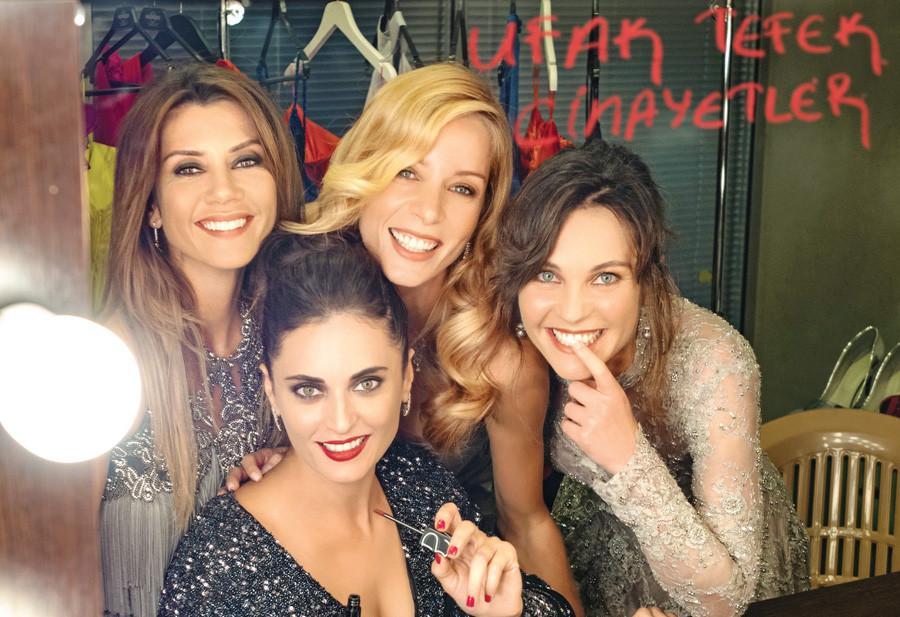
Mothers, prostitutes or independent working women... In Yeşilçam - classıc Turkish cinema - women were usually represented in cliché ways such as the ones mentioned above, rather than portraying complex women characters.
“In the movies from the 1960s and the 1970s, the women are split into categories in a way that we are told which category the women fall into as soon as we see the crucifix around their neck, the veil they wear, even their hair color and … costumes, even before they utter a word,” said Esin Paça-Cengiz, an assistant professor at Kadir Has University and expert in female body, voice and stardom in Yeşilçam.
The depiction of women in cinema, including Turkish television and cinema, was the topic of a conference, “Female Agency and Subjectivity in Film and Television,” April 11-13 at Bilgi University in Istanbul.
Paça-Cengiz was among dozens of international scholars, including several from Turkey, who participated in the conference to discuss women and feminism in film and television in a general context and in a Turkish point of view.
The purpose of the conference was to look for “new ways of understanding the individuation, agency and subjectivity of women” depicted on television and in film, according to the conference’s introduction.
Turkish TV mania
Turkish television and films played a leading role in the discussion last week on the depiction of women.
For instance, Turkish TV dramas about family life, romance and moral issues are spreading across the globe. Among international TV series exports, Turkish shows ranked second after the United States. The global popularity of Turkish TV dramas has surpassed even Latin American soap operas.
For instance, the U.S.-based media mastodon Netflix aired its first original Turkish series, “The Protector” in December. The TV series is set in Istanbul.
Turkey exported more than $350 million in TV series in 2017, up from $10 million in 2008, according to the Turkish Exporters Assembly.
Mothers and housewives
During a panel on the depiction of women in modern Turkish TV dramas, Chien Yang Erdem, assistant professor in the New Media Department of İstinye University, highlighted the series, “Ufak Tefek Cinayetler.”
The series, which had its final season in December - was inspired by American TV series such as “Desperate Housewives,” “Big Little Liars” and “Pretty Little Liars,” where women play main characters.
A common thread in those TV series is the independence of women while fulfilling traditional roles of mother and wife. The women’s luxurious lifestyles – including successful husbands and stunning homes – are a smokescreen for other issues such as complicated relationships and trauma from the past.
The series is atypical for Turkish television and stands out because of its adoption from American shows, said Yang Erdem, whose research includes popular culture, present-day Turkey and television and cinema studies.
“I started looking at this and asked myself; can we even talk about post-feminism in Turkey?” Yang Erdem says.
Post-feminism is a term used to describe the contradictions and shortcomings in feminism, especially between second-wave feminism and third-wave feminism. In “Ufak Tefek Cinayetler,” the four main characters are constructed as powerful women, but their independence is portrayed as an individual responsibility rather than the benefit of societal and political change.
Independent women
In her research, Yang Erdem focused on the character, Oya, who is an independent, successful gynecologist with her own practice in Istanbul. In her youth, Oya struggled with the stigma of being accused by her high school friends of having an affair with her teacher, and in the series, she decides to throw aside the stigma and determine her destiny.
By focusing on individual responsibility, women’s issues are no longer a societal responsibility. According to Yang Erdem, another shortcoming of the series is that the four characters do not represent average Turkish women.
“They are from upper-middle class Istanbul neighborhoods with high lifestyle, fashion and big cars. No one lives like that. It is creating a homogenous Turkish female identity that doesn’t really exist,” Yang Erdem said.
Are women being shown as more complex in TV dramas today than in the Yesilçam era?
“Not really, but in a way, yes and no. In the beginning we see women in series like “Ufak Tefek Cinayetler” - but also historical series - as powerful and independent women, but in the end they choose the more conventional roles of women and become mothers and housewives, just like in the “Bridget Jones” movies,” Yang Erdem said.
She said that the most used cliché on women continues to be limited to the domestic domain, as housewives and mothers, but that the economically independent woman is a new female depiction in Turkish television and commercials within the last 10 years.